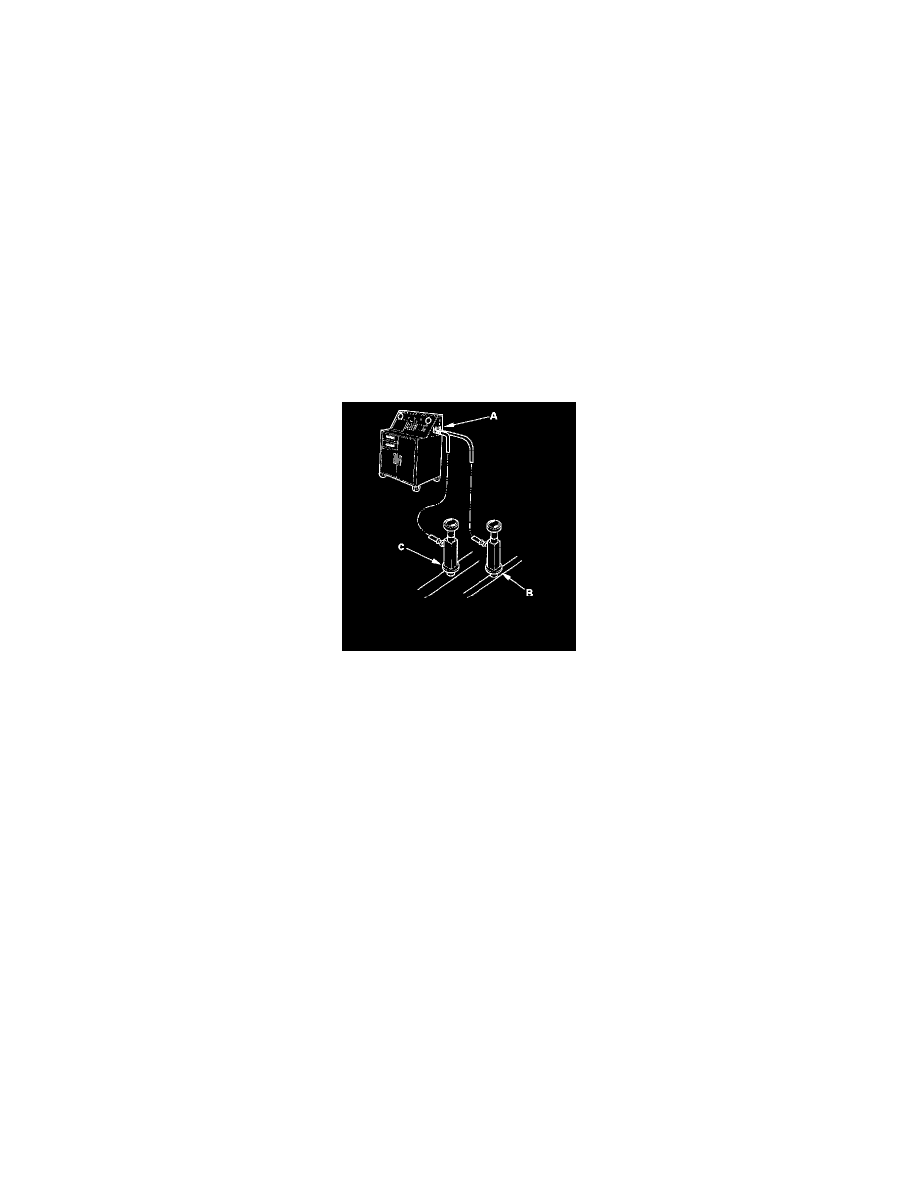Odyssey LX V6-3.5L (2000)

Refrigerant: Testing and Inspection
Refrigerant Leak Test
CAUTION
-
Air conditioning refrigerant or lubricant vapor can irritate your eyes, nose, or throat.
-
Be careful when connecting service equipment.
-
Do not breathe refrigerant or vapor.
WARNING
-
Compressed air mixed with R-134a forms a combustible vapor.
-
The vapor can burn or explode causing serious injury.
-
Never use compressed air to pressure test R-134a service equipment or vehicle air conditioning system.
Use only service equipment that is U.L.-listed and is certified to meet the requirements of SAE J2210 to remove HFC-1 34a (R-134a) from the air
conditioning system.
If accidental system discharge occurs, ventilate work area before resuming service.
R-134a service equipment or vehicle air conditioning systems should not be pressure tested or leak tested with compressed air.
Additional health and safety information may be obtained from the refrigerant and lubricant manufacturers.
1. Connect a R-134a refrigerant recovery/recycling/charging station (A) to the high-pressure service port (B) and the low-pressure service port (C),
as shown in the previous column, following the equipment manufacturer's instructions.
2. Open high pressure valve to charge the system to the specified capacity, then close the supply valve, and disconnect the charging station fittings.
Refrigerant capacity.
Select the appropriate units of measure for your refrigerant charging station
With rear A/C
850 to 900 g
0.85 to 0.90 kg
1.6 to 1.9 lbs
30.0 to 31.7 oz
Without rear A/C
600 to 650g
0.60 to 0.65 kg
1.3 to 1.4 lbs
21.2 to 22.9 oz
3. Check the system for leaks using a R-134a refrigerant leak detector with an accuracy of 14 g (0.5 oz) per year or better.
4. If you find leaks that require the system to be opened (to repair or replace hoses, fittings, etc.), recover the system according to the Recovery
Procedure.
5. After checking and repairing leaks, the system must be evacuated.
